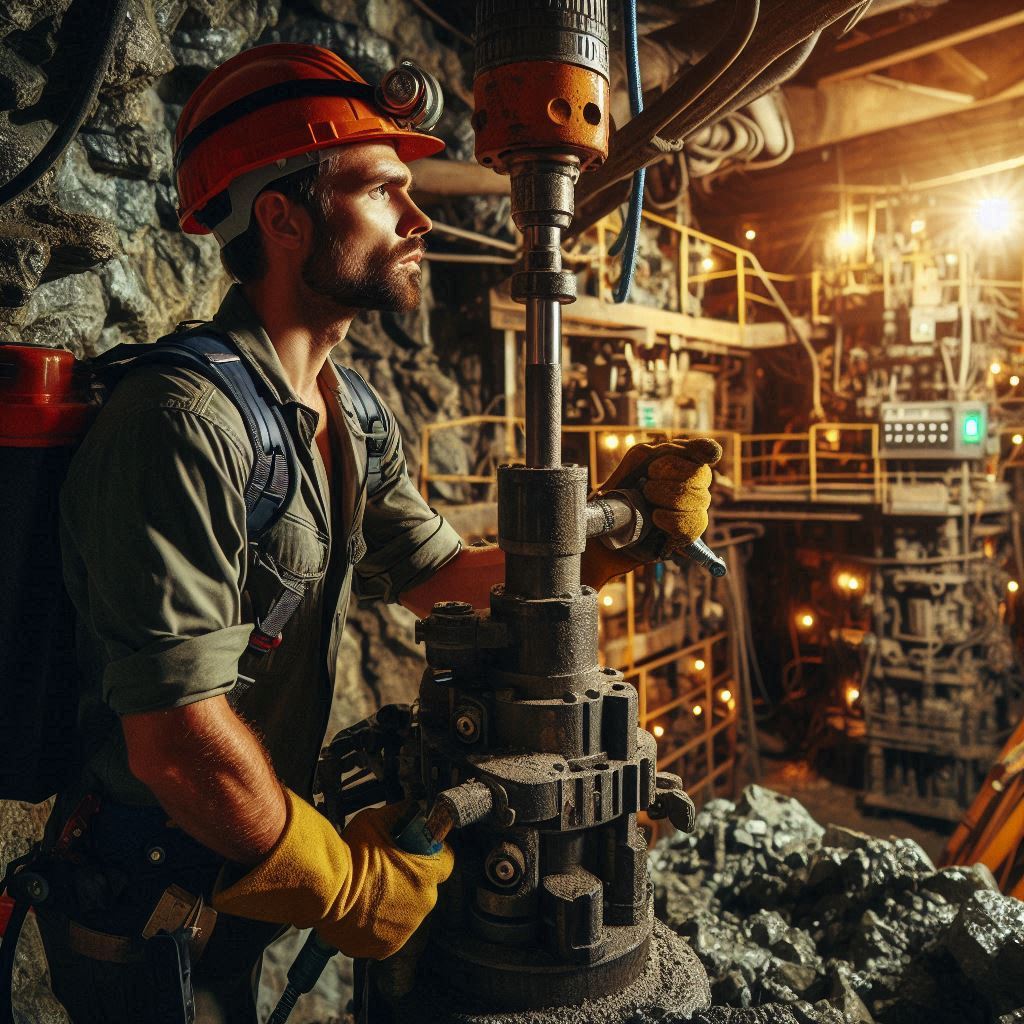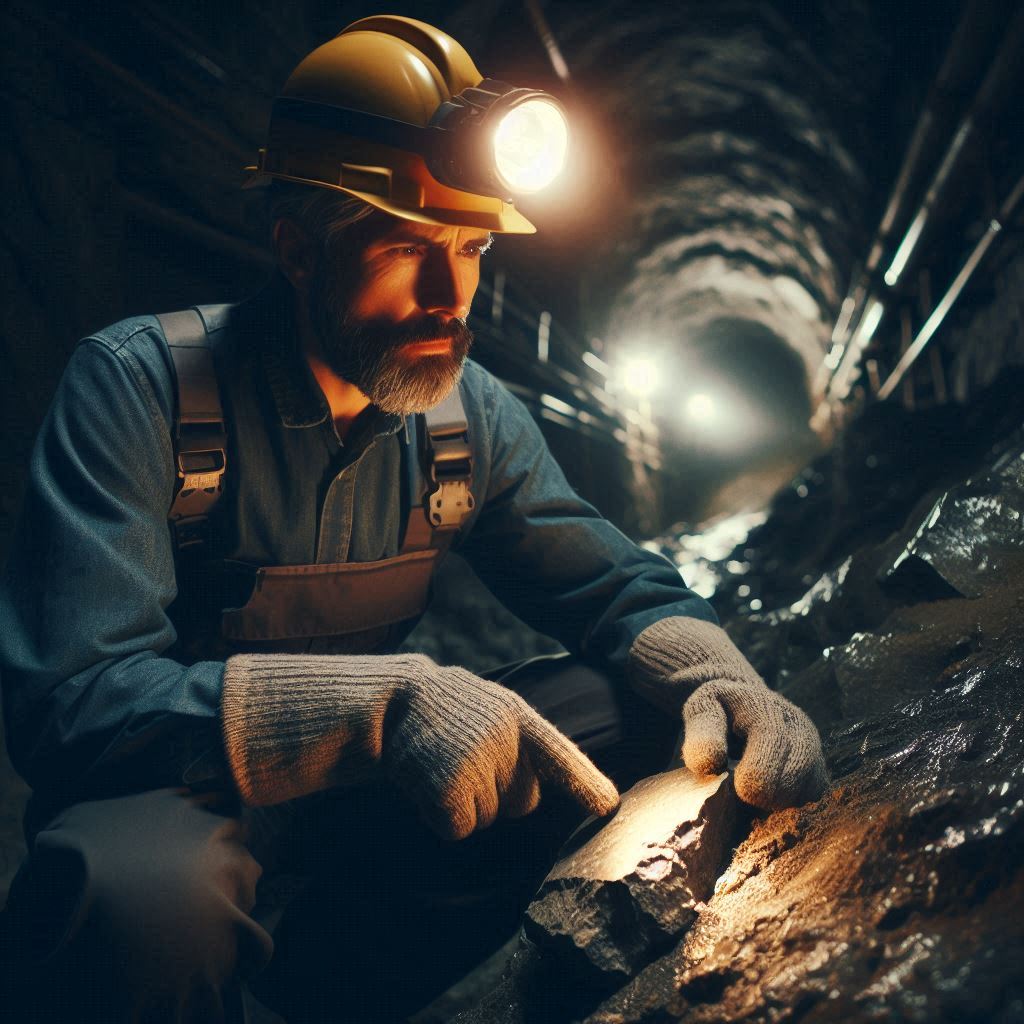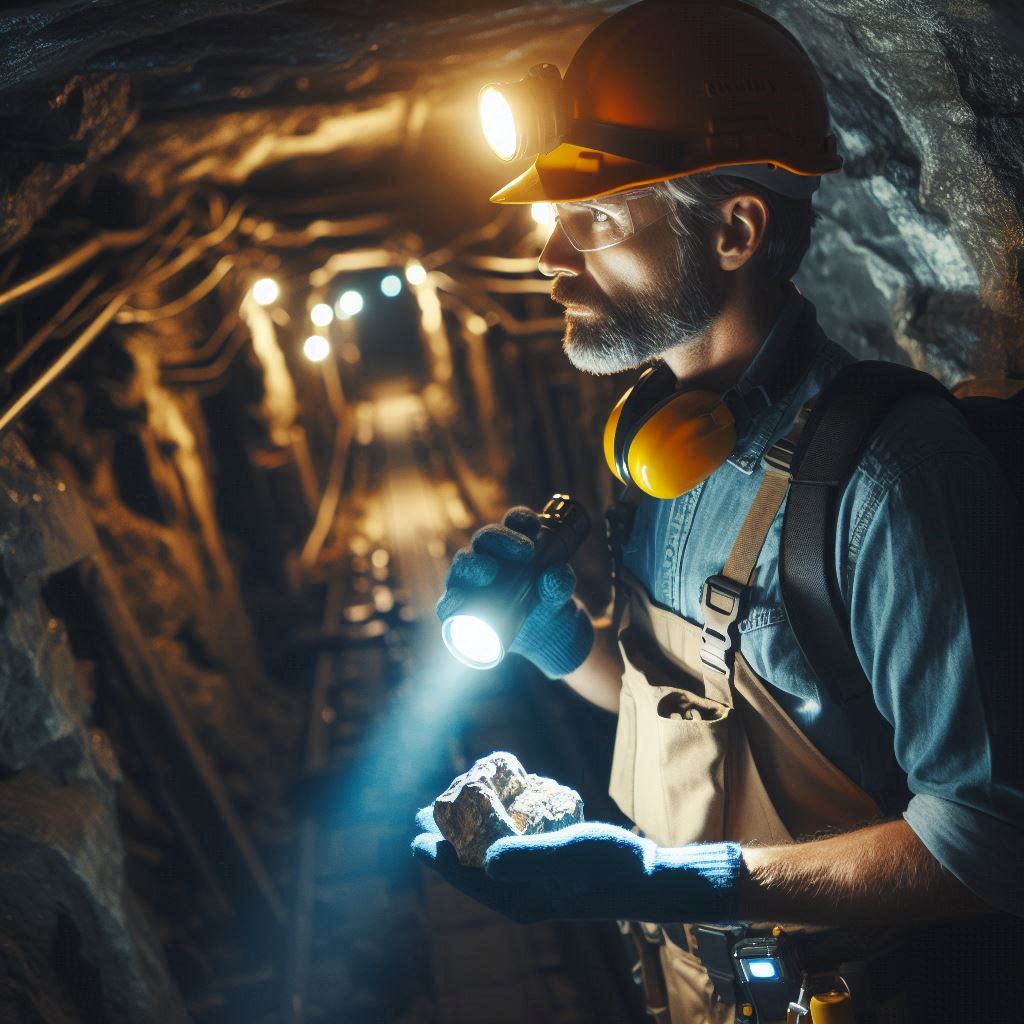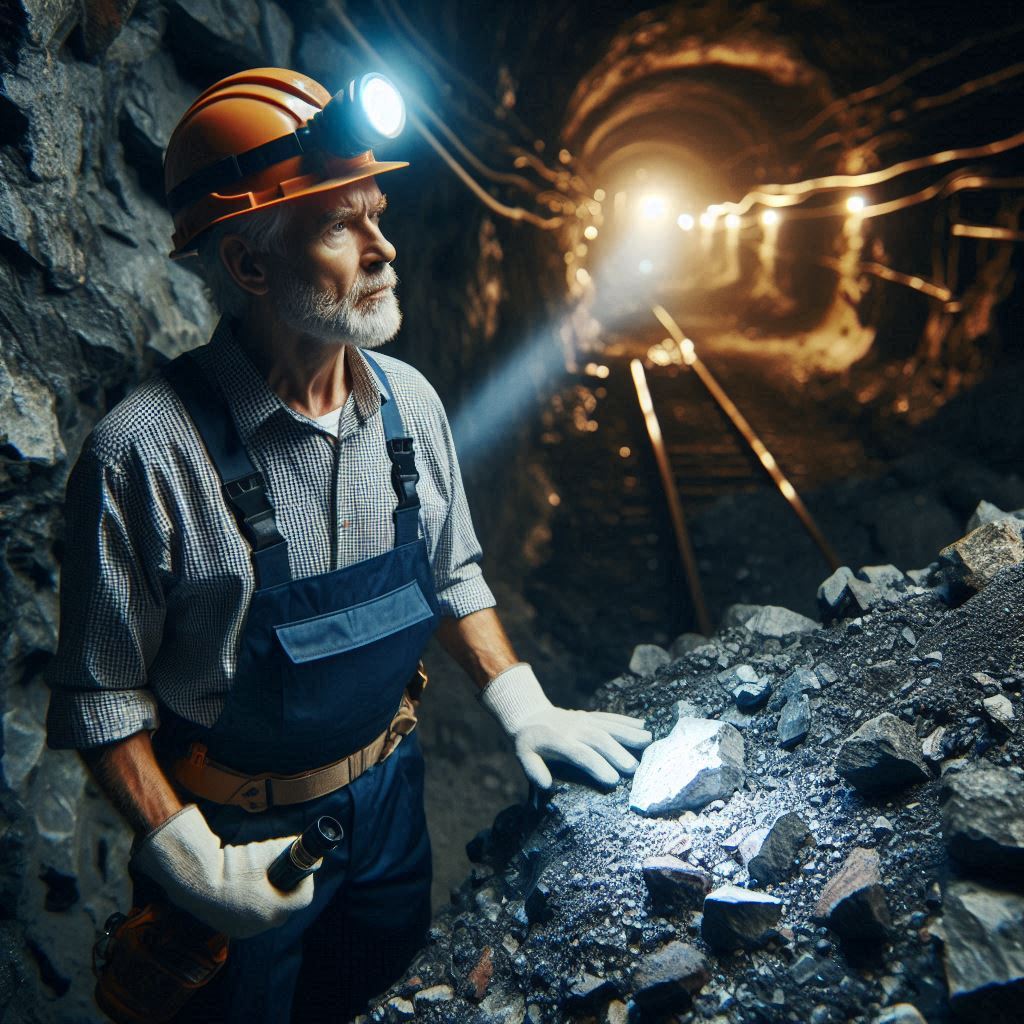Introduction
Brief Overview of the Importance of Tools and Technologies in the Field of Mining Engineering
Tools and technologies are crucial in mining engineering.
They ensure efficient, safe, and cost-effective operations.
From ancient times to today, tools have evolved significantly.
Early miners used basic hand tools, but modern miners rely on advanced machinery.
These advancements enhance productivity and safety.
Mining operations today require a range of specialized tools and equipment.
Each tool serves a specific purpose, making operations more efficient.
Without these tools, mining would be much more dangerous and less productive.
Explanation of How Advancements in Technology Have Revolutionized the Mining Industry
Technological advancements have transformed the mining industry.
Innovations in machinery and processes have increased productivity and safety.
Automation and robotics play a significant role in modern mining.
Automated drilling systems and robotic haulage vehicles reduce the need for human presence in dangerous areas.
These technologies also improve precision and efficiency.
Additionally, remote monitoring and control systems allow operators to manage equipment from a safe distance.
This reduces the risk of accidents and increases operational efficiency.
Advanced software and data analytics tools optimize mining processes and improve decision-making.
Technological advancements also impact environmental sustainability in mining.
Modern technologies help minimize the environmental footprint of mining operations.
For instance, advanced water management systems reduce water usage and prevent contamination.
Dust suppression technologies improve air quality around mining sites.
Furthermore, energy-efficient equipment reduces energy consumption and greenhouse gas emissions.
These innovations make mining more sustainable and environmentally friendly.
Generally, tools and technologies are essential in mining engineering.
They enhance productivity, safety, and sustainability.
As technology continues to advance, the mining industry will benefit from even greater efficiencies and innovations.
Embracing these advancements is crucial for the future of mining.
Traditional tools used in mining engineering
The basic tools that have been used in mining for centuries
For centuries, mining engineering has relied on basic tools to extract valuable minerals from the earth.
The pickaxe, one of the earliest mining tools, allowed miners to chip away at rock and ore deposits.
This simple yet effective tool has been indispensable in manual mining operations, demonstrating its utility in accessing hard-to-reach areas.
Another fundamental tool is the shovel, which miners have used to move loose materials such as dirt, gravel, and ore.
Shovels have played a crucial role in both small-scale mining operations and large-scale excavation projects.
Their design has evolved over time, but their primary function remains the same.
Miners also traditionally used hammers and chisels.
These tools enabled precise breaking and shaping of rocks, making them essential in early mining efforts.
They allowed miners to carve tunnels and extract valuable minerals without relying on more advanced machinery.
Buckets and wheelbarrows have been vital for transporting mined materials.
These simple tools helped miners move heavy loads efficiently, reducing physical strain and increasing productivity.
Despite technological advancements, these traditional tools continue to find relevance in certain mining processes today.
The importance of traditional tools in certain mining processes
Traditional mining tools hold significant importance in various mining processes, even with modern technological advancements.
In artisanal and small-scale mining operations, traditional tools remain essential due to their affordability and accessibility.
These tools enable miners to operate in remote areas where advanced machinery might be impractical.
Pickaxes and shovels, for instance, are indispensable in small-scale gold mining.
Miners use these tools to dig through soil and rock layers to uncover gold deposits.
The simplicity of these tools allows for effective manual extraction without the need for heavy machinery.
In underground mining, hammers and chisels are still used for specific tasks.
These tools allow miners to perform detailed work, such as creating support structures and clearing small passages.
Their precision is unmatched by larger, automated equipment, making them invaluable for intricate mining operations.
Traditional tools also play a vital role in safety and environmental preservation.
Manual tools like buckets and wheelbarrows enable miners to work carefully in delicate environments, reducing the risk of damage to surrounding ecosystems.
This approach is especially crucial in areas where mechanized mining could have detrimental effects.
Moreover, traditional tools offer a sustainable solution in regions with limited access to advanced technology.
They empower local communities to engage in mining activities and support their livelihoods.
By relying on these tools, miners can maintain their cultural practices and contribute to sustainable development.
In general, traditional tools have been the backbone of mining engineering for centuries.
Despite the advent of modern technologies, these tools continue to hold immense value in various mining processes.
Their simplicity, affordability, and versatility make them indispensable in many contexts.
Understanding and appreciating the role of traditional tools helps us recognize the enduring legacy of mining engineering and its evolution over time.
Read: Biomedical Engineering: Regulatory Affairs
Modern Technologies in Mining Engineering
How Technology Has Transformed the Way Mining Is Conducted Today
Technology has revolutionized the mining industry, making operations safer, more efficient, and environmentally friendly.
Advancements in technology have streamlined processes, reduced human error, and increased productivity.
Mining companies now rely on cutting-edge tools and methods to extract minerals and resources from the earth.
This transformation has resulted in significant improvements in safety and cost-effectiveness.
Automation and digitalization play a crucial role in modern mining operations.
These technologies allow for real-time monitoring, data analysis, and remote control of equipment.
The integration of smart technologies helps mining engineers optimize resource extraction and minimize waste.
As a result, mining operations have become more sustainable and economically viable.
The adoption of advanced technologies has also led to a shift in workforce requirements.
Mining engineers must now possess skills in data analysis, computer programming, and remote equipment operation.
This shift has created new job opportunities and has raised the overall skill level within the industry.
The use of modern technologies ensures that mining operations meet the ever-growing demand for minerals while adhering to strict environmental regulations.
Key Technologies Such as Drones, Autonomous Vehicles, and Virtual Reality in Mining Operations
Drones have become indispensable in mining operations.
They provide aerial surveys, mapping, and real-time monitoring of mining sites.
Drones offer a cost-effective solution for gathering accurate data on terrain and mineral deposits.
They also enhance safety by reducing the need for manual inspections in hazardous areas.
Autonomous vehicles are another groundbreaking technology in mining.
These self-driving trucks and loaders operate around the clock, increasing productivity and reducing operational costs.
Autonomous vehicles are equipped with advanced sensors and GPS systems, ensuring precise navigation and collision avoidance.
This technology minimizes human involvement in dangerous tasks, enhancing overall safety in mining operations.
Virtual reality (VR) has transformed training and simulation in mining engineering.
VR allows engineers to simulate mining operations in a controlled environment, providing hands-on experience without risks.
This technology is used for training new employees, improving skills, and planning complex mining projects.
VR simulations help engineers visualize potential challenges and devise effective solutions.
The integration of these key technologies has brought about significant improvements in efficiency and safety.
Drones, autonomous vehicles, and virtual reality are now essential tools in the modern mining engineer’s toolkit.
Their use not only streamlines operations but also contributes to the industry’s sustainability goals.
By adopting these technologies, mining companies can achieve higher productivity, reduce costs, and minimize environmental impact.
The continuous development and implementation of advanced technologies will drive the future of mining engineering, ensuring a safer and more efficient industry.
Read: Graduate Studies in Biomedical Engineering
Importance of Data Analytics in Mining Engineering
Data analytics has transformed mining engineering, optimizing operations and improving efficiency.
The integration of data analytics into mining processes has provided unprecedented insights and control over various aspects of mining projects.
How Data Analytics Is Being Used in the Mining Industry to Optimize Operations
Data analytics in mining focuses on collecting and analyzing large sets of data from various sources.
Sensors and monitoring devices placed throughout mines gather data on equipment performance, environmental conditions, and resource extraction rates.
This real-time data allows engineers to monitor operations closely and make adjustments to optimize performance.
Predictive maintenance is one of the most significant applications of data analytics in mining.
By analyzing equipment data, engineers can predict when machinery will fail and schedule maintenance before breakdowns occur.
This minimizes downtime and reduces repair costs, ensuring continuous operation.
Additionally, data analytics helps in resource management.
Advanced algorithms analyze geological data to predict the location and quantity of mineral deposits.
This enables mining companies to plan extraction processes more efficiently, reducing waste and maximizing resource utilization.
Data analytics also assists in monitoring and improving safety conditions by predicting hazardous events and implementing preventive measures.
The Impact of Data-Driven Decision-Making on Productivity and Efficiency in Mining Projects
Data-driven decision-making has a profound impact on productivity and efficiency in mining projects.
By leveraging data analytics, mining companies can make informed decisions quickly, leading to significant improvements in operational efficiency.
One key area where data-driven decision-making shines is in optimizing mining processes.
Data analytics provides insights into the performance of various mining operations, allowing engineers to identify bottlenecks and inefficiencies.
By addressing these issues, companies can streamline processes, increase productivity, and reduce operational costs.
Furthermore, data analytics enhances supply chain management.
Mining companies can track the movement of materials from extraction to processing to distribution.
This visibility ensures that materials are available when needed, reducing delays and minimizing inventory costs.
Improved supply chain management leads to faster project completion times and increased profitability.
Data-driven decision-making also improves environmental sustainability in mining.
By analyzing environmental data, companies can identify areas where resource extraction can be done with minimal ecological impact.
This helps in developing sustainable mining practices that comply with regulatory standards and reduce the environmental footprint of mining activities.
Moreover, data analytics fosters innovation in mining engineering.
The insights gained from data analysis drive the development of new technologies and techniques, further enhancing productivity and efficiency.
Companies can experiment with different approaches, analyze the results, and implement the most effective strategies.
In essence, the importance of data analytics in mining engineering cannot be overstated.
It optimizes operations, enhances productivity, and drives innovation.
By embracing data-driven decision-making, mining companies can achieve greater efficiency, reduce costs, and contribute to sustainable mining practices.
Data analytics is revolutionizing the mining industry, making it more efficient, profitable, and environmentally responsible.
Read: Biomedical Engineering: Impact on Public Health

Environmental Monitoring Tools in Mining Engineering
The Tools and Technologies Used to Monitor and Mitigate Environmental Impacts of Mining Activities
Environmental monitoring tools in mining engineering play a crucial role.
These tools help in tracking and mitigating the environmental impacts of mining activities.
Advanced technologies such as remote sensing, drones, and Geographic Information Systems (GIS) are extensively used.
Remote sensing enables the detection of changes in land cover and vegetation, providing vital data for environmental assessment.
Drones offer aerial surveys, capturing high-resolution images and videos that help monitor mining sites efficiently.
GIS aids in mapping and analyzing spatial data, facilitating better decision-making in environmental management.
Air quality monitoring systems are also essential in mining operations.
These systems measure particulate matter and harmful gases released during mining activities.
Real-time data from these systems allow prompt action to reduce emissions and protect the environment.
Water quality monitoring tools are equally important.
These tools detect pollutants in water bodies near mining sites, ensuring that water contamination is promptly addressed.
Groundwater monitoring wells are installed to track changes in water levels and quality, preventing adverse effects on local water resources.
Noise monitoring equipment is another critical technology.
It measures the noise levels generated by mining activities, helping to minimize noise pollution.
Vibration monitoring tools are also used to assess the impact of blasting operations on nearby structures and ecosystems.
Soil sampling and analysis tools aid in assessing soil contamination and its effects on vegetation and wildlife.
By using these tools, mining engineers can develop effective mitigation strategies to reduce environmental impacts.
The Importance of Sustainability and Environmental Responsibility in Modern Mining Practices
Sustainability and environmental responsibility are integral to modern mining practices.
The mining industry faces increasing scrutiny to minimize its environmental footprint and ensure sustainable resource extraction.
Adopting sustainable practices is not only a regulatory requirement but also a moral obligation.
Mining companies must prioritize environmental stewardship to protect ecosystems and communities.
Implementing sustainable practices begins with environmental impact assessments (EIAs).
EIAs identify potential environmental risks and outline measures to mitigate them.
This proactive approach ensures that mining activities are planned and executed with minimal environmental disruption.
Sustainable mining practices also involve the efficient use of resources.
This includes optimizing extraction processes to reduce waste and energy consumption.
By improving resource efficiency, mining operations can lower their environmental impact and enhance economic viability.
Rehabilitation and reclamation of mined lands are critical components of sustainable mining.
These processes restore disturbed land to its natural state or repurpose it for other uses.
Reforestation, soil stabilization, and habitat restoration are common reclamation techniques.
Sustainable mining also focuses on reducing greenhouse gas emissions.
Adopting cleaner technologies and renewable energy sources helps mining companies achieve their carbon reduction goals.
Community engagement is vital for environmental responsibility.
Mining companies must collaborate with local communities to address environmental concerns and promote sustainable development.
Transparent communication and active participation of stakeholders ensure that mining projects align with community interests and environmental protection goals.
In a nutshell, environmental monitoring tools and technologies are indispensable in mitigating the impacts of mining activities.
Emphasizing sustainability and environmental responsibility ensures that mining operations are conducted with a long-term perspective, balancing economic benefits with ecological preservation.
Read: Biomedical Engineering: Industry Outlook 2024
Gain More Insights: Day in the Life of a Materials Engineer
Safety Tools and Technologies in Mining Engineering
The Importance of Safety in Mining Operations
Safety in mining operations is paramount.
Mining presents numerous hazards that can endanger workers’ lives.
Ensuring safety in mining operations reduces the risk of accidents and fatalities.
Implementing safety measures promotes a culture of vigilance and responsibility among miners.
When safety protocols are followed, it significantly reduces injuries and operational downtime.
This adherence to safety measures also enhances the overall productivity of mining operations.
Mining companies that prioritize safety also improve their reputation and attract skilled workers.
Thus, safety in mining is not only a legal requirement but a vital component of successful mining operations.
The Latest Safety Tools and Technologies Being Used to Protect Workers and Prevent Accidents in Mines
Modern mining relies heavily on advanced safety tools and technologies.
Personal protective equipment (PPE) remains fundamental in safeguarding miners.
Helmets, gloves, and protective eyewear are essential to prevent injuries.
Beyond PPE, technology plays a crucial role in enhancing safety.
For example, gas detection systems are crucial in monitoring hazardous gases like methane and carbon monoxide.
These systems provide real-time alerts, allowing workers to evacuate before dangerous levels are reached.
Another significant advancement is the use of automated machinery.
Automation reduces the need for human presence in hazardous areas.
Remote-controlled equipment allows operations to continue while keeping workers at a safe distance.
Additionally, collision avoidance systems in mining vehicles prevent accidents by alerting drivers to obstacles and other vehicles.
Wearable technology is also making a substantial impact on mining safety.
Smart helmets and vests equipped with sensors monitor miners’ health and environmental conditions.
These devices can detect signs of fatigue, heat stress, and exposure to harmful substances, ensuring timely intervention.
Drones are revolutionizing mine inspections and monitoring.
They provide aerial views of mining sites, helping identify potential hazards and ensuring compliance with safety regulations.
Drones can access areas that are difficult or dangerous for humans, reducing the risk of accidents during inspections.
Furthermore, communication technology is crucial in maintaining safety in mines.
In fact, the integration of advanced tools and technologies is transforming mining safety.
These innovations not only protect workers but also enhance the efficiency and productivity of mining operations.
As technology continues to evolve, the mining industry must stay abreast of the latest developments to maintain and improve safety standards.
Investing in safety tools and technologies is essential for the well-being of miners and the success of mining operations.
Delve into the Subject: How Systems Engineers Drive Innovation in Companies
Discover More: Environmental Engineering: Field vs. Office Work
Transform Your Career Today
Unlock a personalized career strategy that drives real results. Get tailored advice and a roadmap designed just for you.
Start NowRemote sensing and geospatial technologies in mining engineering
Remote sensing and geospatial technologies have revolutionized the way mineral exploration and mine planning are conducted within the mining industry.
These advanced tools offer a wide range of benefits that can significantly enhance the efficiency and precision of mining operations.
How remote sensing and geospatial technologies are used in mineral exploration and mine planning:
- Identification of potential mineral deposits: Remote sensing techniques, such as hyperspectral imaging, allow geologists to identify mineral signatures from satellite images, helping in the initial stages of mineral exploration.
- Mapping geological structures: Through the use of LiDAR technology, mining engineers can accurately map out geological structures, fault lines, and other key features that are crucial for mine planning.
- Monitoring environmental impacts: Geospatial technologies can track and monitor the environmental impact of mining activities, providing valuable data for compliance and sustainability efforts.
- Planning access routes: Aerial imagery can be used to plan access routes for mining activities, helping to optimize transportation logistics and minimize operational costs.
- Asset management: Geospatial tools enable mining companies to manage and monitor their assets more effectively, contributing to better decision-making and risk assessment.
Benefits of using aerial imagery and satellite data in mining operations
- Improved accuracy: Aerial imagery and satellite data provide detailed and accurate information about the terrain, enabling mining engineers to make informed decisions based on precise data.
- Cost-effectiveness: Remote sensing technologies reduce the need for expensive ground surveys, saving time and resources in the exploration and planning phases of mining projects.
- Enhanced safety: By utilizing aerial imagery, mining companies can identify potential hazards and risks in advance, improving overall safety for workers and equipment.
- Increased productivity: Geospatial technologies help streamline workflows, optimize mine planning, and monitoring processes, ultimately leading to increased productivity and efficiency.
- Environmental sustainability: By leveraging remote sensing tools, mining operations can better manage their environmental impact and ensure compliance with regulations, promoting sustainability in the industry.
Overall, the integration of remote sensing and geospatial technologies in mining engineering offers a myriad of advantages that can propel the industry towards more sustainable and efficient practices.
As technology continues to advance, the role of these tools in mining operations will only become more crucial in the future.
Conclusion
Mining engineering relies heavily on advanced tools and technologies to enhance efficiency and safety.
Modern mining practices have evolved significantly due to technological advancements.
This blog explores essential tools and technologies in mining engineering that drive the industry forward.
Drilling Equipment
Drilling equipment plays a crucial role in mining operations. These machines penetrate the earth’s surface to reach mineral deposits.
Advanced drilling technologies, such as rotary drills and down-the-hole drills, offer precision and efficiency.
They reduce operational costs by minimizing errors and improving drilling accuracy.
Automated drilling rigs also enhance safety by reducing human exposure to hazardous conditions.
Excavation and Loading Machines
Excavation and loading machines are indispensable in mining.
These tools, including hydraulic shovels and loaders, facilitate the extraction and transportation of materials.
Hydraulic shovels offer powerful digging capabilities, while loaders efficiently transfer extracted materials to transport vehicles.
These machines significantly increase productivity by handling large volumes of material quickly.
Advanced models equipped with GPS and telematics systems enable real-time monitoring and optimization.
Haulage and Transport Systems
Efficient haulage and transport systems are vital for moving extracted materials.
Conveyor belts, haul trucks, and rail systems streamline the transportation process.
Conveyor belts provide continuous and automated material transport, reducing manual labor.
Haul trucks, especially electric and autonomous models, enhance efficiency and reduce environmental impact.
Rail systems offer cost-effective long-distance transportation solutions, connecting mining sites to processing facilities.
Crushing and Grinding Equipment
Crushing and grinding equipment are essential for reducing material size in mining operations.
Crushers break down large rocks into smaller pieces, while grinding mills further reduce particle size for processing.
Advanced crushers and mills incorporate automated control systems, optimizing performance and energy efficiency.
High-pressure grinding rolls (HPGR) are particularly effective in reducing energy consumption and improving throughput.
Monitoring and Control Systems
Monitoring and control systems are critical for ensuring efficient and safe mining operations.
These technologies include sensors, data acquisition systems, and control software.
Sensors monitor various parameters, such as equipment performance, environmental conditions, and worker safety.
Data acquisition systems collect and analyze this data in real-time.
Control software enables operators to make informed decisions, enhancing operational efficiency and safety.
Safety Technologies
Safety technologies are paramount in mining engineering.
Personal protective equipment (PPE), such as helmets, gloves, and respiratory devices, safeguards workers.
Additionally, advanced safety systems, such as collision avoidance and proximity detection, prevent accidents.
These technologies alert operators to potential hazards, reducing the risk of collisions and other incidents.
Implementing safety technologies is essential for creating a safe working environment in mining operations.
Environmental Management Tools
Environmental management tools help mitigate the impact of mining activities on the environment.
Technologies such as dust suppression systems, water treatment plants, and reclamation equipment play a crucial role.
Dust suppression systems minimize airborne particles, improving air quality.
Water treatment plants ensure the safe disposal and reuse of water used in mining processes.
Reclamation equipment aids in restoring mined land to its natural state, promoting sustainable mining practices.
The discussed tools and technologies are vital for modern mining engineering.
They enhance efficiency, safety, and environmental sustainability in mining operations.
Embracing these advancements is crucial for the continued progress and innovation in the mining industry.




